Liquid assets are financial assets that are quickly converted into cash with little or no loss in value within a short span of time. Liquid assets are money market instruments and heavily traded securities in the stock market. They are those assets that are easily converted to cash on hand, cash in the bank or other cash equivalents. A person owning liquid assets calls their assets to have high liquidity.
Liquid assets are also called current assets and usually in a company current assets are cash and other cash equivalents. They are needed for the general operations of a company like paying bills and giving salaries to the employees. This current asset, which is what is left of a company, is calculated by adding the cash and marketable securities and subtracting the liabilities from it. There is also a ratio called the current or capital ratio which shows the liquidity of a company. It is calculated by dividing the current assets by current liabilities and its value should be less than one to say that there is a good liquidity ratio.
All assets are not considered liquid assets. Real estate investments or assets are not considered liquid assets because they are not readily converted into cash. It would take longer for a building to be sold than a share of a company. Other long-term investments are also not considered liquid assets. Anything which takes a lot of time to find buyers is not a liquid asset. Liquid assets will have more sellers and the demand will be higher as well.
What does Liquid Asset mean?
Liquid assets are assets that are readily transformed into cash without loss of actual value. The loss of value of the liquid assets occurs due to brokerage or commission if at all there is any loss. Commission or brokerage is a standard procedure in all kinds of financial transactions. These are therefore not considered a loss in value. A small loss in value while transferring into cash is considered negligible.
A liquid asset is sold to a buyer as a money equivalent. A liquid asset is considered a money equivalent that is easily transferred into cash whenever necessary.
Cash in hand or cash in the bank is a liquid asset. All debt-free assets that are readily converted into cash also constitute a part of liquid assets. But a real estate investment or any long-term investment is not part of a liquid asset because they are not easy. Let us take a look at an example to put this into perspective.
Suppose, A person owns 100 shares of State Bank of India, (SBI) in NSE. The current market price – brokerage is the current value of the stock. The value of 100 shares without the brokerage should be a part of the liquid asset’s current value while considering the value of a liquid asset of the person,
All forms of marketable security form a part of a liquid asset. But these securities should conform to the three parameters stated below to be a part of liquid assets.
- The securities must be easily tradable in an organized market or exchange similar to NSE. These assets should be a part of a recognized and organized market. Shares bought in the gray market, black market, or physical shares should not be considered part of liquid assets.
- The securities should have high liquidity in the market. There should always be a large number of buyers available in the market who are ready to buy the securities at the current market price, (CMP). Illiquid stocks or options do not form a part of liquid assets.
- The ownership of the stocks should be easily transferable. The easy transfer of ownership is necessary because the buyer of the stock should enjoy the ownership whenever the person buys the security and should be able to resale it into the market at the current value.
Liquid assets change hands frequently in businesses and by the buyers of the liquid assets. This liquidity is also a necessity for businesses to thrive.
How does liquid asset function?
Liquid assets function as cash equivalents. The function of liquid assets is to provide a safety net for business owners and to meet opportunities for investors. Liquidity is judged by how fast the liquid asset is converted into cash or cash equivalent such as cash in a bank account. Liquid assets are used to pay off debt or meet emergency demands in a hurry in the corporate world.
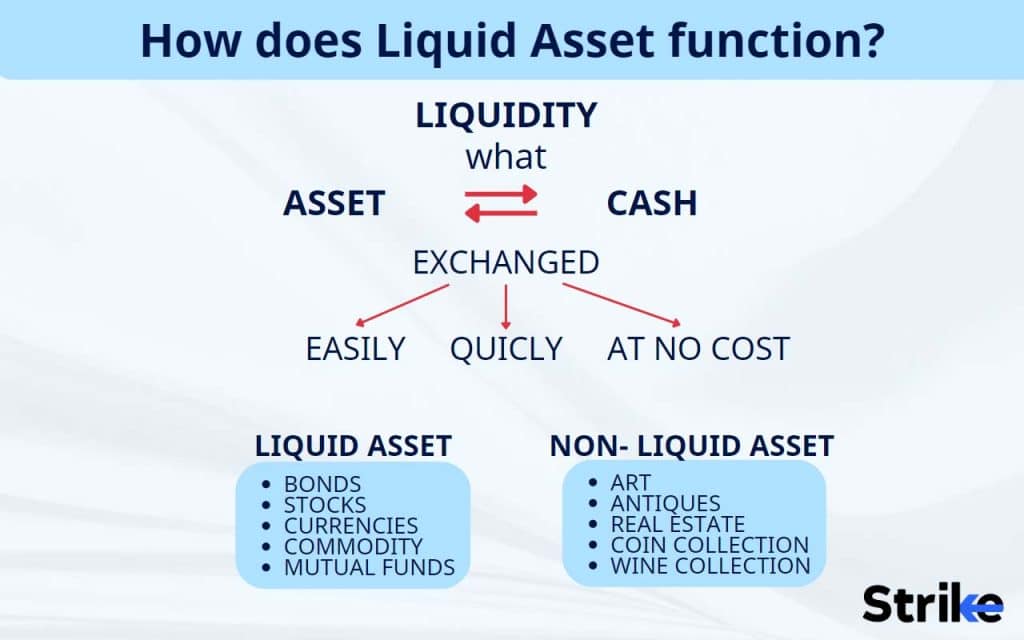
The most common example of liquid assets is cash in hand or cash in a bank account that could be withdrawn fast. Liquid assets are required even for a student or any other individual. Unexpected situations and crises will need to be solved with emergency fund or liquid assets.
What is the formula for liquid assets?
The formula for liquid assets is pretty simple and straightforward. You should add all your assets that are considered liquid, including your transferable shares and accounts receivable apart from the cash and all cash equivalents. But don’t forget to subtract the liabilities from this. This is given below in a simple formula.
(Marketable Securities + Cash) – Current liabilities = Liquid Assets.
Cash includes the money in hand and in the bank. Cash equivalent includes the values of all marketable securities in hand. Liabilities include all current liabilities. They include income tax, dividends payable and other operational expenses. The liabilities are deducted to find the exact value of current liquid assets.
Where to calculate liquid assets?
The net liquid asset is calculated by using the below formula.
Current assets (liquid) – Current (stable) liabilities = Net liquid assets
Liquid assets are recorded in the balance sheet which shows the financial position of a company. There are three main sections in the balance sheet. They are the assets, liability and equity. The assets could be written all together or separated into sections. Find the liquid assets from the section or you will need to find them individually from the entries. The most liquid asset is found at the top of the list of total liquid assets and the least liquid asset is found at the bottom of the list. This is at least the usual practice. But try to find out which accounting standard they are using in order to be sure.
What are examples of liquid assets?
Liquid assets are of ten types. Any asset that is easily transformed into cash is a liquid asset. Given below are examples of liquid assets that are easily transformed into cash.
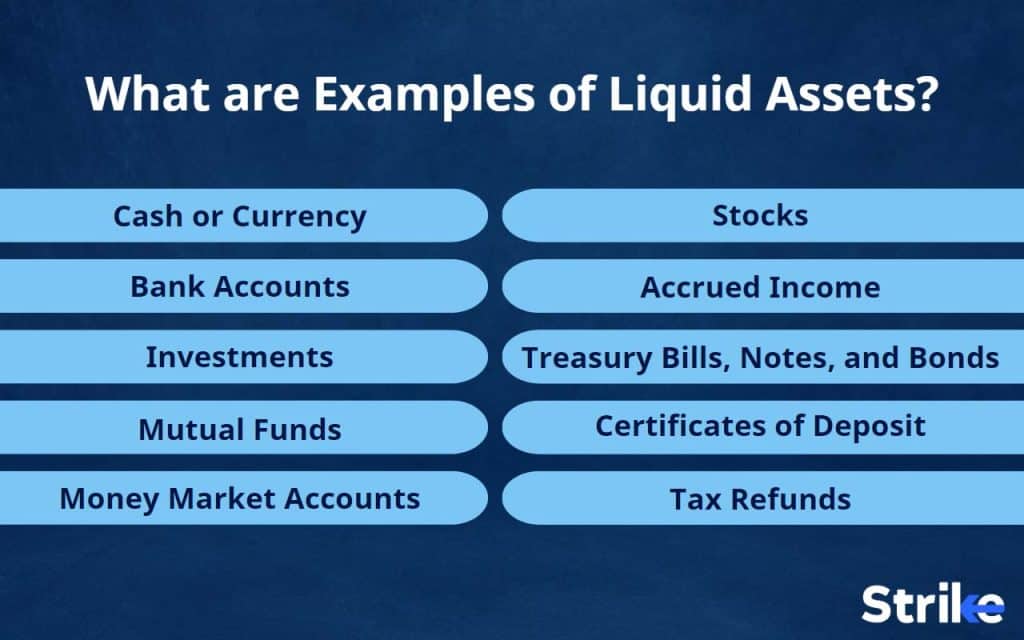
1. Cash or Currency
Cash or currency notes are legal tenders authorized by the Reserve Bank of India (RBI). Any person or firm in possession of these legal papers could use them anywhere to buy anything in India. Cash could be of any form depending on the central government of any country. They are in the form of coins, currency notes or other legal papers authorized by the central bank of the country. Liquid assets including money in any form are termed as cash.
2. Bank accounts
We keep money in banks and withdraw money or pay others through it. Therefore money in a bank account forms another important liquid asset. Money kept in banks is also a liquid asset that could be used without any loss in value.
3. Investments
Investments of any kind that is easily transferred into money or money equivalent is also a liquid asset. An individual sells the invested asset and transfers the value to money without any trouble. Stocks, company shares and other tradable financial instruments fall into this category. But investments in real estate are not part of a liquid asset because properties are not sold readily at desired prices.
4. Mutual Funds
Mutual funds are financial instruments that are tradeable in exchanges. Investors invest money in mutual funds managed by professional firms known as Asset Management Companies (AMC). The mutual funds are bought and sold as units that are tradeable in the market at their Net Asset Values (NAV). The current-day market value is the price of the units. The liquid asset value for mutual funds is the NAV multiplied by the number of units minus brokerage.
5. Money market accounts
Money market accounts are a type of financial account that allows individuals to have accounts in money market funds. Money market funds are those funds that invest in high-quality short-term debt instruments. These are low-risk accounts. They are traded in the market and are liquid assets.
6. Treasury bills, Notes, and Bonds
Treasury bills, notes, and bonds are the most liquid assets. They are readily transferred into cash anytime. These financial instruments are top-quality liquid assets. One always finds buyers for these assets.
7. Certificate of deposits
Certificates of deposits are forms of savings products that earn income for the depositor over a fixed period of time. The interest earned is received only after the tenure of the fixed instrument is over. These assets are treated as liquid assets.
8. Tax refunds
All taxpayers submit their tax returns at the end of every fiscal year. The income tax department returns a portion of paid tax into the taxpayer’s bank account after calculating the deposits and other tax exemptions. These are tax refunds. This amount of money is taken into consideration after the fund is refunded into the taxpayer’s account.
9. Accrued income
Accrued income is that income that has not been received yet. The accrued income is earned by the investor but not yet received. The accrued income falls under the category of receivables until the income is received in the balance sheet. The earned money is shown as income earned after the income is received. Therefore the accrued income is only a part of the liquid asset once the income is earned practically.
10. Stocks
Stocks are considered liquid assets because they are readily transferred into cash at current market prices.
There could be some earnings from other sources which are equivalent to cash in addition to the above forms of financial instruments. These earnings also form a part of the liquid asset after they are converted into cash or cash equivalents.
Which of the following is the most liquid asset?
The most liquid assets are cash, cash in a bank account, CDs and US treasury bills. All liquid assets do not have the same kind of liquidity. Stocks and ETFs, corporate bonds, mutual funds and foreign currencies are among the fairly liquid assets. The asset holder does not get the full value of the current asset prices because of transaction fees and other charges during transactions of fairly liquid assets. These assets are directly subjected to daily price fluctuations. The seller therefore will not receive the desired price by selling them.
The least liquid assets among liquid assets are bullion, cryptocurrencies, real estate properties and arts and antiques. The prices of these liquid assets fluctuate a lot and sellers of these assets have to wait for buyers to sell them at the desired prices. There is rarely a fixed price and middlemen/ agents eat a chunk of the profit for real estate and arts and antiques.
What is a non-liquid asset?
A non-liquid asset is an asset that cannot be quickly converted into cash or sold without a substantial loss in value. There are six main examples of the same.
Real estate – Selling property like homes, land, or commercial buildings typically requires listing the property and waiting for offers, negotiating with potential buyers, and going through a closing process that takes weeks or months. Compared to financial assets, real estate markets are illiquid and it may require lowering the asking price substantially to attract buyers within a short timeframe.
Privately held companies – Shares in private companies that are not publicly listed on a stock exchange have no ready public market for buying and selling shares. Trying to find private buyers for your stakes requires direct negotiation, extensive documentation, and often accepting large discounts to estimated fair value. The illiquidity makes it challenging to exit these investments quickly.
Collectibles – Items like fine art, rare coins, vintage cars, etc. are non-standard assets without an organized marketplace. Selling them requires research to value items, finding interested collectors or specialty auction houses, having items appraised, and waiting through an unpredictable auction process. Owners rarely get full fair market value selling collectibles rapidly.
Commodities – Physical commodities like gold bars, oil, wheat, lumber etc. cannot be instantly converted to cash. They need to be sold through dealers, brokers or commodity exchanges, which have certain transaction costs, lot size requirements, auction processes etc. This lacks the speed and simplicity of selling financial instruments on exchanges.
Intellectual property – Patents, trademarks, copyrights have their fundamental value from potential licensing or royalty income streams rather than the ability to sell the IP outright. There are some IP auction houses but the market is illiquid with few buyers. Selling IP involves legal processes that make quickly monetizing IP difficult.
Illiquid fixed income – Corporate bonds, municipal bonds and other fixed income instruments are non-liquid if they have low trading volumes and limited interested buyers in secondary markets. Selling these instruments rapidly often requires accepting large discounts to face value. The legal transfer process also creates delays compared to liquid securities.
The common thread is that non-liquid assets cannot be converted to cash quickly or without losing capital. Liquidity is valuable, especially in times of financial stress. So non-liquid assets tend to trade at a discount compared to more liquid investments.
What are the non-liquid asset examples?
The most common example of non-liquid assets is land, real estate, vehicles, machines and equipment, paintings and art, collectibles etc. These are assets for which there are fewer buyers. Liquidity increases when the demand is high. These examples don’t have much demand when compared to liquid assets and hence are harder to sell.
What are the different levels of liquid assets?
The liquid assets fall into three categories as per the Basel Accord which is a global regulatory standard. As per Basel III requirements, banks are required to hold high-quality liquid assets for a minimum period of 30 days to maintain their liquidity coverage ratio (LCR). It is required to assure enough cash outflows for a minimum of 30 days from the bank.
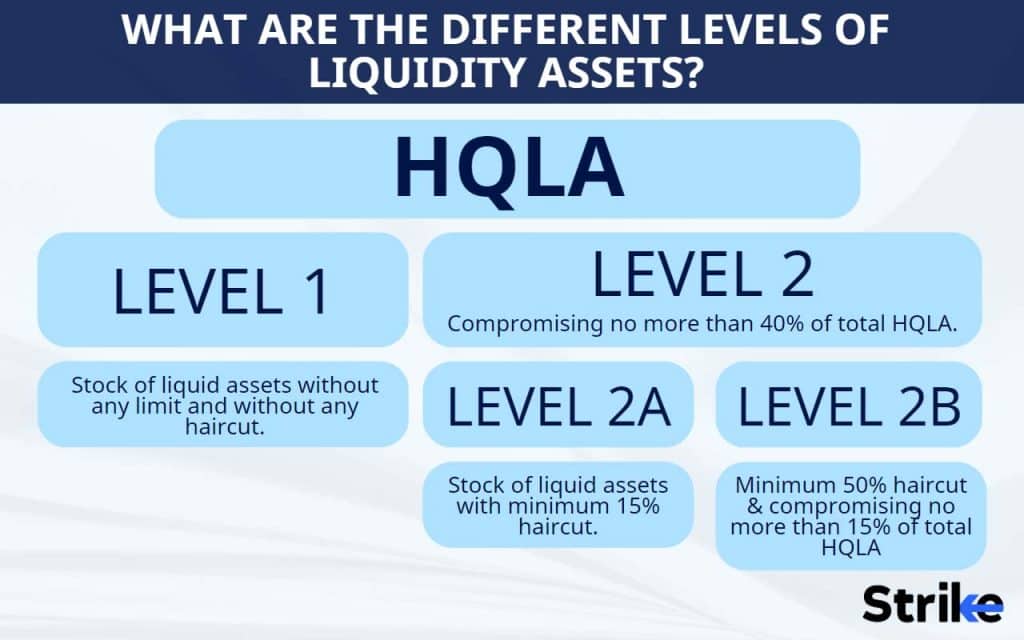
They have divided liquid assets into three categories.
Liquid Asset categories –
- Level 1
Level 1 liquid assets are high-quality liquid assets. The value of these liquid assets is not discounted for a period of 30 days as per the LCR requirement under the Basel III standard of calculations. Short-term government bonds and securities, US treasury bills and sovereign bonds fall into a level 1 category. Their values are not discounted within 30 days. The main point is they are easily converted to cash or cash equivalent.
- Level 2A
Level 2A liquid assets are discounted at a rate of 15% in LCR calculations. These liquid assets are securities issued by different development banks or sovereign bonds issued by them. Securities or bonds issued by government-authorized enterprises fall into this category. They are slightly less liquid than level 1 as it might take some time and effort to acquire the funds.
- Level 2B
Level 2B liquid assets are discounted at a rate of 25% in LCR calculations. Liquid assets of Level 2B include stocks that are traded publicly, bonds issued by investment-grade non-financial corporations and other similar securities.
There are also other classifications and categories of assets that go under the broad class of levels of liquidities. Each level with decreasing liquidity will be portrayed.
What are the benefits of liquid assets?
Liquid assets are important and necessary for any business as well as for individuals. There are 5 major benefits that are given below.
- Liquid assets provide cash supply as and when necessary. Cash-rich companies having high-value liquid assets easily pay off their debts and are very popular with investors.
- Liquidity is indicative of good financial health. Liquidity is a key indicator of a company’s financial health in the money market. The high value of liquid asset holders enjoys the advantages of being debt free even in personal finance.
- Liquid assets help individuals or the ones possessing the assets deal with a financial crunch easily.
- Liquid assets give immediate backup support in case of an emergency.
- Possession of high-value liquid assets improves the financial profile and allows the asset owner to find financiers more easily.
Holding liquid assets is indeed an advantage and a financial need in times of emergency. The percentage depends upon each individual and each organization. But there should at least be a contingency fund.
What are the disadvantages of liquid assets?
Liquid asset owners are in an advantageous position most of the time even during crunch periods. But the biggest disadvantage of liquid funds is they provide lower returns compared to many other forms of investments. Liquid assets are hence never subjected to high growth. The liquid assets in fact tend to get devalued because of inflation and other financial factors. Lack of growth allows for the gradual erosion of value over time.
What is the liquid and non-liquid market?
The main difference between the liquid market and the nonliquid market is the ease with which buying and selling take place. The assets are therefore categorized based on liquid assets which are sold easily without any loss in value and nonliquid assets which are difficult to buy and sell.
Examples of liquid markets are those markets where stocks, forex, commodities, futures and options and bonds are traded. Stock exchanges like BSE and NSE are liquid markets. And examples of non-liquid markets are those markets where tangible assets of high value like heavy machinery and equipment, real estate and luxury items are traded. It comes down to demand ultimately and there is more demand for liquid assets because there money runs the world and liquid assets are easily converted to cash. Non-liquid assets on the other hand will have trouble finding the buyers.
What conditions must be met for liquid assets to have value?
Liquid assets must, as the name suggests, have high liquidity in the market. High Liquidity would mean that there is enough trade in the market for that particular asset. A liquid asset must have a high number of buyers in an organized and government-authorized market or stock exchange. The liquid asset is only considered liquid when it is sold at the current market price without any significant loss in value. This buying and selling would in turn help in the development of the economy.
Liquid assets should therefore be easily convertible and should also be easily accessible for buying and selling to take place successfully.
Why are liquid assets important in business?
Liquid assets are very important for a business. Business houses prefer to have liquid assets in possession. Following are the 6 reasons why liquid assets are important in business.
- High liquidity – liquid assets are the preferred means for business transactions due to high liquidity. Buyers and sellers transact through liquid assets in exchange for goods.
- Transferable – liquid assets are directly transferred into cash. Business houses prefer to have liquid assets in possession owing to this reason.
- Liquid assets increase the net worth of companies.
- Possession of liquid assets allows a company to meet all short-term financial demands.
- Liquid assets are the most preferred financial instrument during emergencies or financial crunch.
- Liquid assets help to pay the company’s debt easily.
These reasons are just the usual ones for which businesses use liquid assets. But there are more reasons that are unique and subjective to each company as well.
Why are assets called liquid?
Liquid assets have high fluidity. A liquid asset is easily transformed into other forms of financial assets. The ownership of liquid assets is easily transferable. A company or a person easily buys anything at any instant using liquid assets in possession. This high amount of liquidity has given them the name liquid assets.
Are stocks considered liquid assets?
Stocks are liquid assets but not all of them. Major stocks which are listed on the exchange and which have high trading volume daily are considered liquid assets. Large-cap, mid-cap and some selective small-cap stocks are accepted as liquid stocks. These stocks are traded daily, make good trading volumes and buyers show interest of buying these stocks at the current market price considering the price fluctuations.
Take the example of the State Bank of India listed in NSE. It has a steady trading volume daily. Buyers show interest at different price levels. So, the seller of SBIN stock in NSE expects to sell the stock at or near the current market price.
But a less-known small cap or penny stock is not to be considered a liquid asset because buyers show very little interest in trading them daily. These stocks are traded infrequently and the seller is not sure if the person is able to sell them at CMP. There are few buyers for them.
What is the difference between liquid assets and fungible assets?
Liquid assets are those assets that are readily transformed into cash or cash equivalents without any loss in value. Cash in hand, cash in a bank account, and a certificate of deposit are examples of liquid assets.
Fungible assets are those assets that are not uncommon or unique and which are exchanged or substituted with another asset of equivalent or the same value. Cryptocurrencies like Bitcoin and Ethereum are examples of fungible assets. A cryptocurrency is exchanged into other cryptocurrencies of equivalent value without going to a bank for encashment. Bitcoins and Ethereum are used to buy other items of similar values without encashment in the global market.






 Previous Article
Previous Article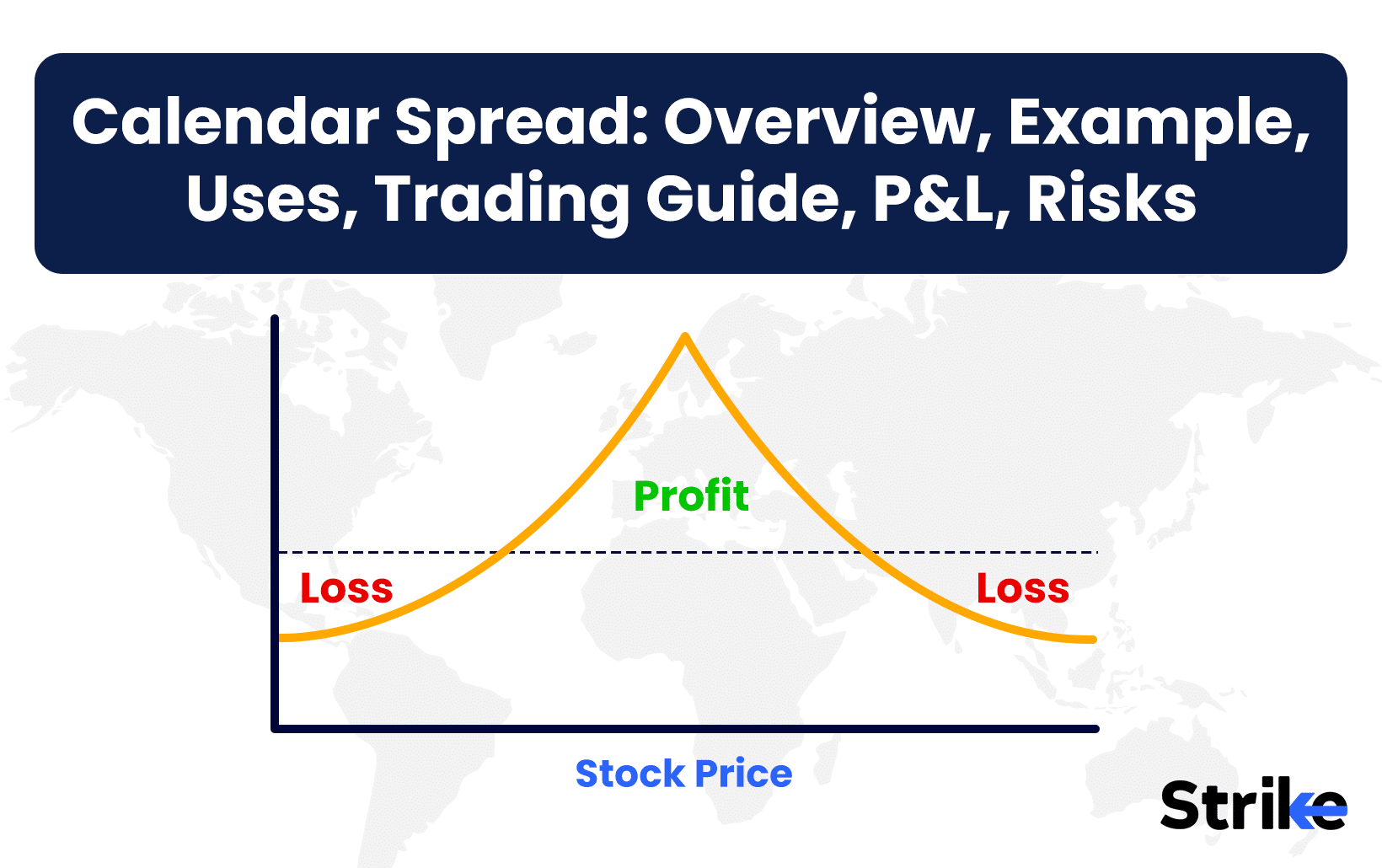
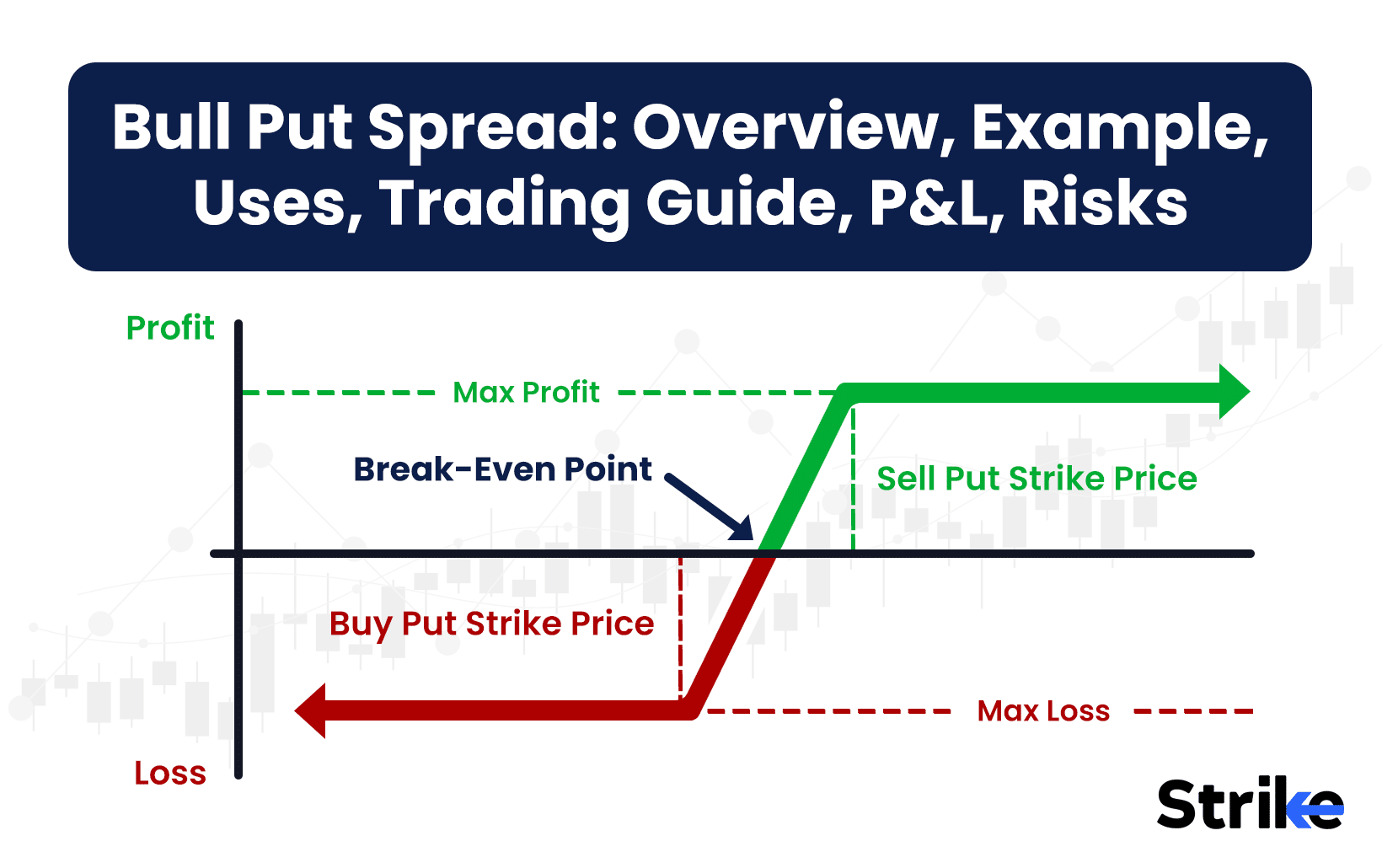





No Comments Yet